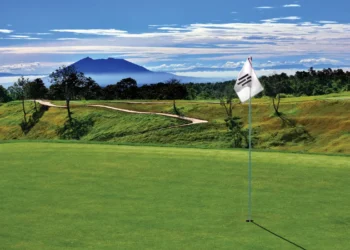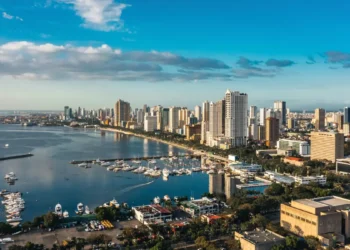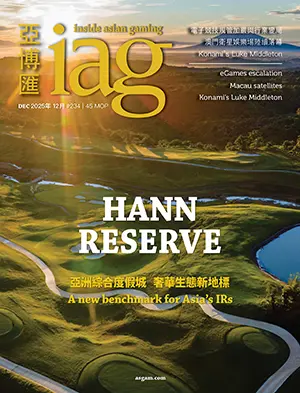While Japan grapples with a population fearful that IRs will spark an increase in gambling addiction, the evidence suggests a very different outcome for those cities around the world to have already welcomed integrated resorts.
It was November 2008, around 14 months before the first of Singapore’s integrated resorts opened its doors, when gaming veteran Andrew MacDonald and Professor of Economics and Director of the Institute for the Study of Gambling and Commercial Gaming at the University of Nevada, Bill Eadington, penned a column for Inside Asian Gaming.
The column, titled, “The Case for Integrated Resorts,” described the evolution of this increasingly popular integrated resort concept across Asia and the various benefits such all-encompassing entertainment complexes can provide.
Perhaps most notably though – in hindsight at least – was MacDonald and Eadington’s take on the role integrated resorts could potentially play in combatting gambling addiction.
 “The major conclusion for national governments, or for states and provinces empowered to authorize casino-style gambling, is to reach the understanding that their policy alternatives are not a question of integrated resorts versus no gambling whatsoever,” they wrote at the time.
“The major conclusion for national governments, or for states and provinces empowered to authorize casino-style gambling, is to reach the understanding that their policy alternatives are not a question of integrated resorts versus no gambling whatsoever,” they wrote at the time.
“Rather, they have a choice between permitting alternative structures, styles and types of gambling industries that have markedly different economic and social impacts.
“By virtually any measure, the concept of the integrated resort best harnesses the benefits associated with their alternatives, while (potentially) reasonably constraining the unintended negative impacts. Carefully developed legislation and implementation, which seems to be the case for Singapore, will prove far more benevolent in the long run than the haphazard and opportunistic approaches that have been undertaken in many countries, states and provinces over the past few decades.”
Fast forward 12 years and the musings of MacDonald and Eadington have proven remarkably prophetic.
In Singapore, where Marina Bay Sands and Resorts World Sentosa celebrate their 10th anniversaries this year, a “Survey on Participation in Gambling Activities Among Singapore Residents” published in 2018 found that 0.8% of respondents could be classified as either probable or pathological problem gamblers. The number is significant given the rate of those suffering from either problem or pathological gambling in 2005, five years before Singapore’s IRs opened, had been 4.1%. The survey, conducted every three years, had shown problem gambling rates falling to 2.9% in 2008 and 2.6% in 2011 but then plummeting to just 0.7% in 2014 – four years after the IRs had opened.
That the presence of integrated resorts with casinos could in fact reduce the prevalence of gambling addiction in a community seems counter-intuitive and is certainly a fact that has yet to gain any traction in Japan, where public approval for integrated resorts remains low due to problem gambling concerns.
Yet the numbers don’t lie, and are not limited to Singapore.
“I read a paper recently called ‘Financial literacy and gambling behaviour: evidence from Japan” and in that paper it states the problem gambling rate in Japan is 0.8%. Well, the last figure I saw on problem gambling in Victoria (Australia) was also 0.8%,” explains Peter Cohen, Director of Regulatory Affairs for consultancy firm The Agenda Group and former Executive Commissioner and Chief Executive Officer of the Victorian Commission for Gambling Regulation.
“The difference between the two jurisdictions? Victoria has a casino, 26,000 slot machines in 500 venues, lotteries, sports betting, betting on horses, keno – all forms of gambling – while Japan has a few types of sports betting and pachinko.
“So I’m not convinced that opening casinos in Japan will move the needle that much.”
In Macau, the world’s largest casino hub where integrated resorts are the lifeblood of the city’s economy, problem gambling rates have also fallen. In 2003, 12 months before Macau’s first IR opened its doors, a problem gambling prevalence study found that 4.4% of those who gambled suffered from a gambling disorder. More than a decade later, the most recent prevalence study found that rate had declined to just 2.5%.

“It has improved a lot,” explained Professor Davis Fong, Director of the Institute for the Study of Commercial Gaming in Macau, in a recent interview with IAG.
One of the key reasons for such numbers are the resources that IR operators pour into responsible gambling programs such as training for staff and promotions to raise awareness among the community.
Galaxy Entertainment Group, for example, was the first IR operator in Macau to establish a dedicated responsible gaming team to work closely with stakeholders to promote and implement a range of initiatives aimed at embedding a responsible gambling culture within the company.
Last year, those initiatives included quarterly promotion campaigns, responsible gaming roadshows and a visit to the Sheng Kung Hui Gambling Counseling and Family Wellness Centre, as well as regular training and refresher courses.
The idea is to not only train up staff to recognize addictive behavior in its customers but also ensure the staff themselves are physically and mentally healthy while reminding them of the importance of rational gaming.
“GEG’s responsible gaming efforts revolve around enhancing customer protection, promoting stakeholders’ awareness and education, as well as providing team members and their family members with access to a professional network of support, counselling and treatment,” GEG says.
“GEG believes it takes time and collaboration between the different parties to create and sustain a responsible gaming culture. Since GEG established the industry’s first responsible gaming team in 2008, GEG has been working effortlessly with the Social Welfare Bureau of the Macau SAR Government, the Gaming Inspection and Coordination Bureau, the Institute for the Study of Commercial Gaming of the University of Macau, the local gaming operators and other non-governmental organizations to fulfill our responsible gaming pledge.”
Another key to Macau’s success in reducing problem gambling rates has been a government-mandated self-exclusion law under which players who feel they have a problem can apply to be banned from entering any casino for up to two years. It’s a process Cohen says is particularly effective.
“One of the things I’m very strong on is that people need the ability to manage their own gambling and in fact research shows that people who are empowered to manage their gambling have a better likely result in controlling the amount they gamble, and self-exclusion is one of those tools that empowers people,” he explains.
 “The fact that it is voluntary, rather than at the behest of the casino, empowers that person to do it the way they want. I know from my time as a regulator in Victoria, we used to see the data from Crown so we knew how many people were excluded, we knew how many of those were self-exclusions and we knew how many of those people breached their exclusion, because when they did it was a technical breach of the law. What we saw was that most who self-excluded obeyed the requirement because it’s a tool they wanted to work for them. When exclusion is permanent the player might be less likely to try it because they think they are limiting their future enjoyment.
“The fact that it is voluntary, rather than at the behest of the casino, empowers that person to do it the way they want. I know from my time as a regulator in Victoria, we used to see the data from Crown so we knew how many people were excluded, we knew how many of those were self-exclusions and we knew how many of those people breached their exclusion, because when they did it was a technical breach of the law. What we saw was that most who self-excluded obeyed the requirement because it’s a tool they wanted to work for them. When exclusion is permanent the player might be less likely to try it because they think they are limiting their future enjoyment.
“But we also know that people who exclude for six or 12 months generally don’t come back to the casino anyway. It breaks the cycle for them and they don’t return. So I think self-exclusion is a really good example of empowering.”
Notably, the declining rate of those suffering from a gambling problem in Singapore has come at a time when the number of people to have self-excluded from Singapore’s casinos has risen substantially, up from 190,927 in 2014 to 348,856 in 2018.
None of which would come as much surprise to MacDonald and Eadington, who could very well have had Japan in their sights back in 2008 when they pointed out the far more inherent dangers that exist with forms of “convenience gambling” – such as pachinko – compared to IRs.
“Alternatives such as permitting the proliferation of electronic gaming devices in arcades or bars or taverns (so-called convenience gambling) limits the economic and catalytic power that might be associated with integrated resorts,” they wrote.
“Furthermore, the ability to control for excessive or problematic gambling through exclusionary strategies is far more difficult for convenience gambling than it can be for highly regulated and cooperative integrated resorts.
“It will be interesting to see which countries will be next to accept and act upon these scientific observations by harnessing the economic potential that integrated resorts promise with thoughtful and effective legislation and implementation.”
































